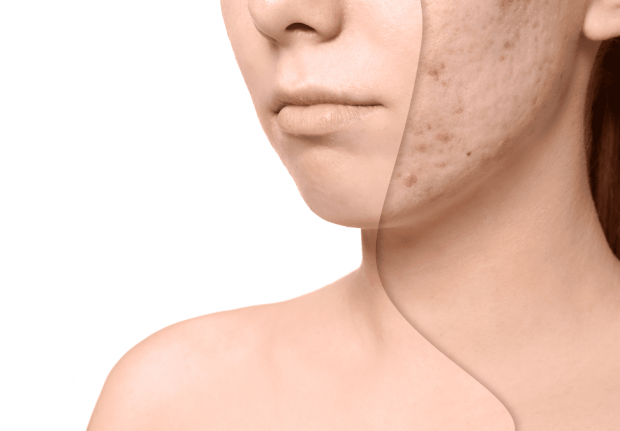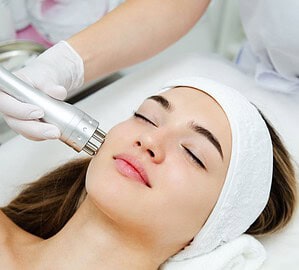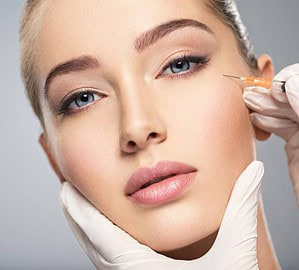Now that you have finally mastered ways of preventing new breakouts and learnt ingenious ways of keeping your skin in tip-top shape, the next logical step would be minimizing the appearance of your past battle scars with acne. Your options, as far as professional acne scar removal goes, are majorly restricted to therapies and comprehensive treatment plans whose target is to stimulate the regeneration of new skin cells and the removal of old dead ones. The idea here is that the new skins will help re-carpet the surface of your face thereby filling up any pits and bumps left over from a past acne episode.

According to a highly-sought acne scar remover, here’s a quick premise of the most common therapies and procedures that can drastically improve the appearance of your scars.
1. Dermabrasion for Clogged Pores
It’s essentially a procedure and skin therapy session whose objective is to resurface uneven, scarred or irregularly pigmented skin left behind in the aftermath of a debilitating acne breakout. Unlike other acne spot treatment procedures, dermabrasion aims at working the entirety of the face to reveal a radiant smooth skin that wouldn’t have been possible before that.
It is similar to microdermabrasion in that a handheld ‘scrubbing’ device is used to physically roughen and abrade the skin in a bid to stimulate the proliferation of new skin cells. In terms of what you can expect from this, the therapy is likely to yield almost the same results as ablative skin resurfacing or a deep chemical peeling. The upside is that dermabrasion is less invasive and will generally require less recovery time compared to the two.
Before this procedure, your dermatologist will cleanse your skin thoroughly before administering a suitable local or general anesthesia. The treatment will involve physically scrapping the scars away using a small motorized high-speed brush which exfoliates the skin thoroughly. If done well enough, the outer scarred skin will be removed to reveal smoother and new skin underneath.
While it is possible to achieve impressive results from just one dermabrasion session, which should take anywhere between 15 minutes to an hour, several sittings may be needed for the best outcome.
That being said, dermabrasions are not recommended for the following groups of people
- People with fragile capillaries
- Sufferers of undiagnosed lesions
- People with active acne or rosacea
- Sufferers of psoriasis, lupus, eczema or dermatitis
2. Chemical Peels as a Clearly Corrective Dark Spot Solution
As the name might suggest, chemical peels involve attempting to improve appearance of past acne scars via application of a chemical solvent to the outermost layer of the face. The peeling away of the old skin stimulates the growth of new skin which is often smoother and significantly less scared at first glance. Besides, this type of peeling has proven to be quite effective in minimizing irregular pigmentation,getting rid of sun-damaged skin and superficial scars that may not be as a result of acne.
While chemical peels can be an excellent option for fair-skinned individuals who are looking for a quick non-invasive way of getting rid of their acne scars, it carries an array of risks that you should be aware of as you head for your next appointment. This includes;’
- Reactivation of past cold sores
- Fresh scarring
- Permanent or temporary change in pigmentation and skin color. This is especially true for ladies on contraceptives who have a history of brownish/reddish facial discoloration.
Actually, this is why it is super important for you to discuss your skin condition and overall treatment goals in depth with your dermatologist to determine the best concentration of the chemical peel that should be used in the therapy. Be sure, also, to notify them if you have any history of persistent cold sores, facial x rays or unexplained recurrent scarring.
What’s more, it is also critical for recoverers of chemical peel skin therapy to avoid direct sunlight for at least three months after a procedure.
Laser Skin Resurfacing for Nodular Acne Scars
Laser skin resurfacing is mostly recommended for widespread and extensive acne scarring which acne scar spot treatment or patches may not be effective against. Just as you would guess, the objective here is to remove the layers of dead skin that form the acne scars to allow the body a chance to regenerate new skin cells. Sometimes, particularly in cases of very severe scarring, the dermatologists will combine this procedure with chemical peels using salicylic acid, lactic acid or glycolic acid to improve the chances of getting excellent results in record time.
Unlike chemical peels, however, laser skin resurfacing gets rid of the scar tissue layer by layer, step by step with incredible precision. What’s more, the laser tool that is used for this task is so adapted for this that the abrasion process is consistent enough to stimulate the regrowth of a younger-looking and tighter skin surface. It is no wonder that most patients report that wrinkles and fine lines tend to disappear after a well-administered laser skin resurfacing therapy.
Therefore, apart from just plain old acne scars, the procedure can come in handy against the following common skin defects
- Age spots
- Drooping eyelids
- Crow’s feet
- Sagging skin
- Wrinkles
- Sun damage
The best candidates for this procedure would be individuals with fairly decent skin elasticity, non-oily and generally healthy complexion. Those with darker skin tones,nonetheless, may want to look elsewhere since laser skin resurfacing carries a higher risk of hypopigmentation or hyperpigmentation in medium to dark skin shades.
Dermal Fillers For Boxcars Left Behind by a Pustules Episode
Dermal fillers are arguably the best solution for improving the appearance of depressed acne scars. It involves filling up these pits with either collagen or the patient’s fat collected from another part of the body to give the skin a more even-looking appearance. The procedure was first developed for reduction of wrinkles and fine lines but it is now not uncommon for specialists to rely on it to reduce deep and circular indentations that are consistent with severe acne scarring.
The type of dermal filler that the dermatologist will choose for your skin type will depend on a number of factors such as the severity of scarring and your facial anatomy. The same applies to the amount of scar filler used to minimize the depressed look. And most probably they are likely to use a hyaluronic acid filler like Restylane and Juvedarm for this type of acne scar therapy.
Since the objective of dermal fillers is to minimize the distinctiveness of damage left behind by depressed acne scarring, it should not come as a surprise that the best candidates for this procedure are patients with severely sunken scars who are looking for a rather non-invasive approach. Having said that, it is not recommended for people with active bruising or acne breakouts.
In Closing – Final Thoughts
You may want to prepare specifically for the acne scar treatment that you are about to undergo weeks in advance to minimize the probability of suffering side effects such as itching, redness and general discomfort. Sometimes, this may require you to avoid sun exposure for months or a couple of weeks at least before commencing treatment. It is also not unheard of for doctors to instruct their patients to refrain from smoking at least a month before the start of your first therapy session. The same applies to blood thinners or any kind medication that could cause artificial darkening of the skin.
Speaking of which, the doctor could prescribe a set of antibiotic and retinoid topical cream before and after the procedure to promote healing and prevent bacterial infection.



